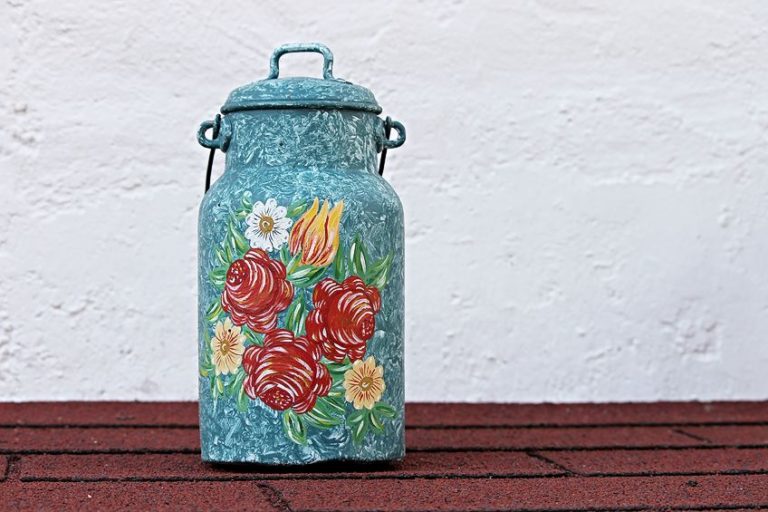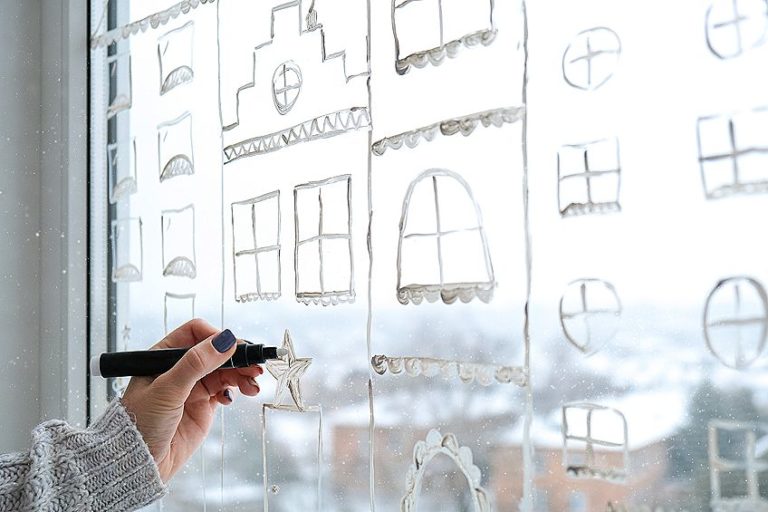What Are Standard Canvas Sizes? – Typical Canvas Dimensions
This post may contain affiliate links. We may earn a small commission from purchases made through them, at no additional cost to you.
Canvas stretched on a frame for painting on is a versatile invention, used for hundreds of years. These days canvas is no limited to painting, but is increasingly used in the printing industry for reproductions of popular artworks by famous artists, or prized wedding photos, or family mementos such as that perfect day on the beach. It is to be expected then, that prepared canvases come in all sorts and sizes. You may be asking yourself “what are standard canvas sizes?” Well, we are here today to talk about the typical canvas sizes, from small to large canvas sizes, and even rectangle to square canvas sizes. We will explain how to read a canvas size chart and how to choose a canvas according to the proportions of your painting dimensions. This will help you choose the most suited size of a canvas for the artwork you have in mind, to prevent the subject matter from looking like there is no room or lost in the expanse of space.
The Size of a Typical Canvas
Ideally, you should never alter the painting you intend to make to fit the canvas that you have. You should rather source a canvas best suited to the scale and dimensions of the artwork you envision. This may be more difficult than it sounds, and many people panic when they get to the art store and then buy whichever canvas seems right at the time. This can be a costly mistake. Canvas size and dimensions should be carefully considered.

To an art novice, all canvases may look more or less the same, aside from the most obvious differences between very small and vey large canvases. You will find it extremely useful in the long run to educate yourself on the canvas size chart, and learn how to recognize the different canvas dimensions so that you will always know which one is best suited to your project.
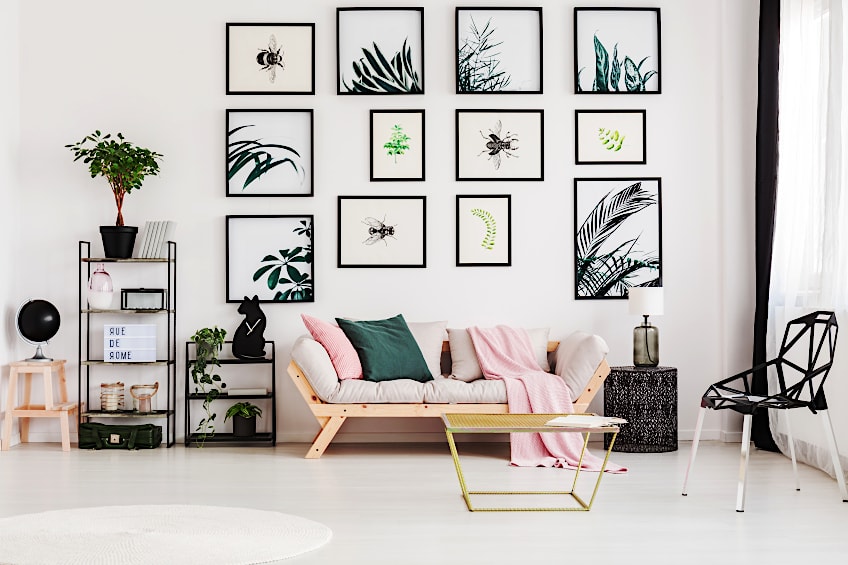
Sizes for Rectangular Canvases
So, what are standard canvas sizes? Unless you make and stretch your own canvases, you will have a selection of pre-made canvases to choose from. Once you have a clear idea of the scale and dimensions of the artwork you intend to make, you can go out and select the canvas that best suits your idea. To give you a little bit of a head start, we have some examples of commonly used canvases from small to large canvas sizes.

Canvas in Mini Sizes
A mini canvas is defined as any canvas measuring less than 4 x 6 inches, where most of them are square. It may as well have been called a micro canvas, because it is only just bigger than a business card, so it is tiny! You could use this size of canvas for unique little fridge magnets, or decorations for your small desk space at work. These mini canvases come in the following dimensions:
- 2 x 2 inches
- 3 x 3 inches
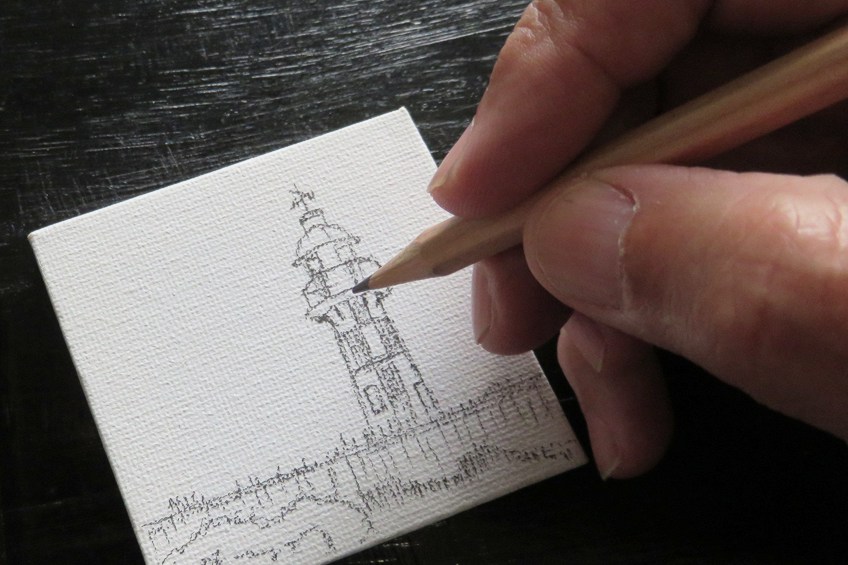
Canvas in Small Sizes
These are a little bigger than the mini canvas size, but not by much. they make pretty unique postcards, or birthday cards, that can be kept forever. If you are a fan of painting tiny landscapes or capturing special moments on the go with your friends, these canvases are the right fit. Here are the two dimensions you can choose from:
- 4 x 6 inches
- 5 x 7 inches
Canvas in Medium Sizes
Choosing a medium-size canvas is the best option for someone who is starting and is not sure what size canvas to purchase. Unless you group a whole series of artworks in this size together, medium-sized canvases will get lost on the average wall, so it is not the most obvious choice for professionals. It does make for a great beginner’s sized canvas as it is not too big and not too small. Here are some of the most popular dimensions to choose from in medium canvas sizes.
- 8 x 10 inches
- 9 x 12 inches
- 11 x 14 inches
- 12 x 16 inches

Canvas in Large Sizes
Once you have had some time to practice the art of painting, with whatever medium you prefer, and you are more comfortable with filling up spaces, you can move to large canvases. These canvases are perfect for large landscapes of the countryside filled with small details that can lead the eye around the expanse of your painting. Here are a few options that you can choose from in the large canvas department:
- 18 x 24 inches
- 20 x 24 inches
- 24 x 36 inches
- 30 x 40 inches
- 36 x 48 inches

Sizes for Square Canvases
Did you know that most canvases are rectangular? Even if it looks square, it is most likely a rectangle, and you can tell by comparing the sides of a canvas. One side will more often be a bit longer than the other. You do get square canvases though, their most common sizes are listed below:
- 2 x 2
- 3 x 3 inches
- 8 x 8 inches
- 10 x 10 inches
- 12 x 12 inches
- 20 x 20 inches

Geometric Shaped Canvases
Advances in technology has made it is so much easier to create different shaped canvases on a commercial scale. You can now choose from circular to triangle-shaped canvases, or even a heart shape if you wish. These are available in some art supply stores, and even come in various sizes.
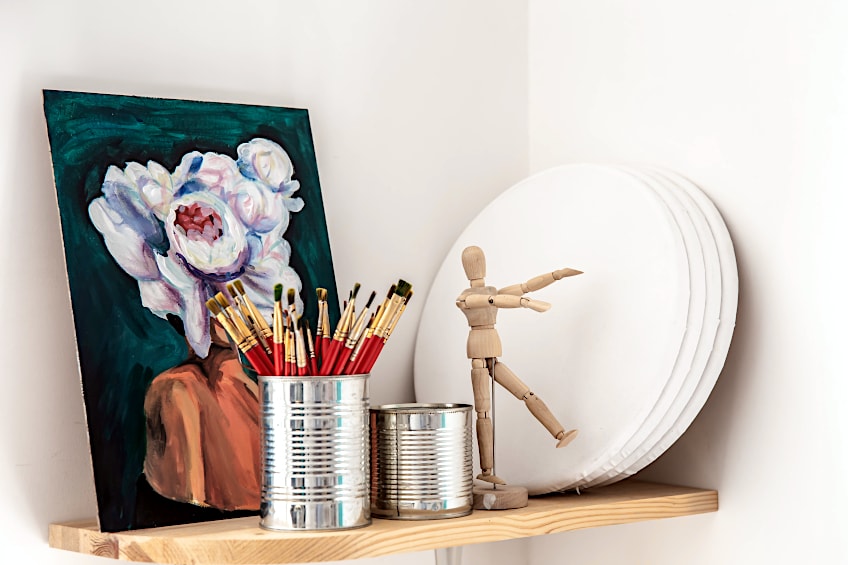
Elongated Rectangular Canvas Sizes
This type of canvas shape is rectangular, but elongated. Also known as an oblong shape, they are ideal for painting panoramic scenes and viewpoints, or short comic-like stories. This is not a commonly found canvas, and you might have to do a bit of searching to find them in stores, but they do exist. You can also get them custom-made.
- 3 x 9 inches
- 12 x 36 inches

Personalized Canvas Sizes
If you are struggling to find the canvas with your perfect dimensions, there is always the option to have one made specifically for you. This might cost a bit more than buying one already made, but it will be worth the extra penny when your artwork is complete. You can also learn how to make your own frames and stretch your own canvases is you really need to save money, or if you have a habit of using non-standard canvas sizes.

Regular Canvas Size Chart
Typical canvas sizes are the sizes that can be found easily in art supply stores. We have listed a few examples in the canvas sizes chart below so that you can see them for yourself.
| Small Canvases | Medium Canvases | Large Canvases |
| 5 x 5 | 10 x 8 | 18 x 24 |
| 4 x 6 | 10 x 10 | 20 x 24 |
| 7 x 5 | 12 x 9,10 | 24 x 36 |
| 6 x 6 | 12 x 12 | 30 x 40 |
| 8 x 8 | 14 x 10,11 | 36 x 48 |
| 14 x 14 | ||
| 16 x 12 |
Recommended Canvas Sizes
Maybe you recently got married, and the photographer has finally sent you the edited photographs from the special day. Now it is up to you to choose the most suitable canvas dimensions for your picture to be printed on. We have listed a few of the most popular canvas sizes, with a description of what they are best suited for. This way, you can have a better idea if and when you place an order online.

10 x 8-Inch Canvas
As a reference for the actual size of this canvas, you can place a typical sheet of A4-sized paper next to it, and it will be pretty much the same size. This one is ideal for printing photos of your family. Consider surrounding a large canvas with a photo of your wedding day with this sized canvas with photos of your children. If you ask for a medium-sized canvas, this is usually what you are given.
12 x 12-Inch Canvas
This is the ideal sized canvas to use for a big and empty wall. It manages to fill spaces beautifully. This is the perfect canvas for the star photo from your wedding day, your child’s christening, or possibly your latest work of art, destined for a gallery space. As you can see by the dimensions, this canvas is a square shape, which can be helpful if the painting you are painting needs to be symmetrical.
24 x 10-Inch Canvas
This is one of those elongated rectangular or oblong-shaped canvases. It might not qualify as a typical canvas sizes, but it offers a lot for the imagination to run wild with. You might even appreciate it if you have a photo that you want to be printed of your whole family at your wedding, and they are standing in a row. It can also be used to paint a landscape from a panoramic viewpoint.
24 x 36-Inch Canvas
This is quite a large canvas that will be the hero piece in your lounge, but it is best suited to high ceilings. Use this as the centerpiece of a series of photographs, or paint something worthy of the Tate museum. It is your canvas, and seeing as you are not limited to size, do not limit your imagination.
How to Choose the Right Canvas Size
Canvas paintings have not always been such a common thing. Prior to the Renaissance, portable paintings (as opposed to wall frescoes) were painted onto prepared wooden panels. Once dry, paintings on canvas could be removed from their structural frames and rolled for easy transportation. Making it easier for artists to sell works to a variety of patrons. Canvas stretched onto a wooden frame has a number of benefits. A stretched canvas provides a sturdy surface to work on, and a texture that is ideal for receiving paint, and the frame prevents the canvas from slipping or curling as the paint dries, making your painting experience a true pleasure.

Canvas Aspect Ratio
Back in the day, before canvases were easily and affordably made by machines, artists would have to have an idea of the dimensions and proportions of the artwork they were planning at the structural frame-making stage already. Once this structural frame was made, they would then stretch and secure their canvas to it. Once a painting was completed, a second decorative frame could be constructed around it. These days, we just have to make sure that we select the right sized canvas to fit the decorative frame we have selected to house your masterpiece. This is where the “aspect ratio” comes into the mix.
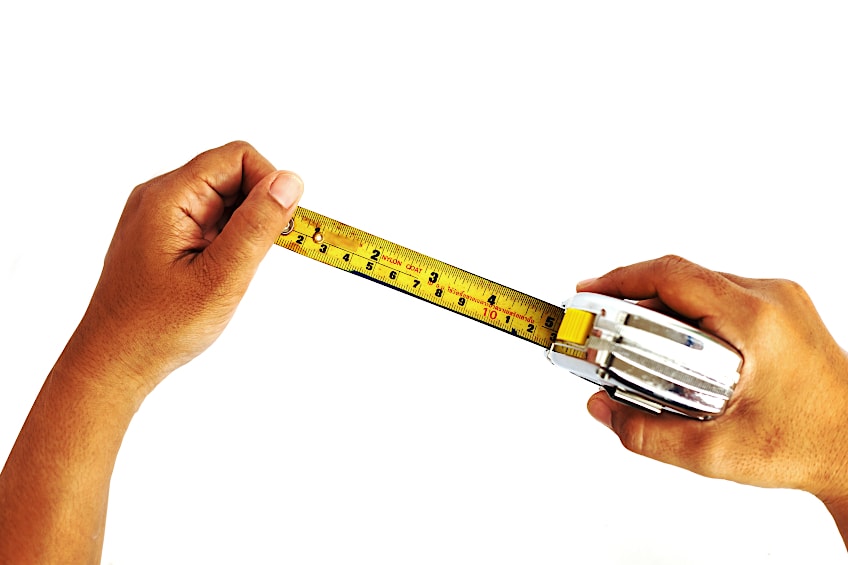
The aspect ratio refers the shape and proportions of the canvas. We can see if a canvas is square by the ratio, or dimensions, or the shape, which would typically be like 12×12 or 4×4 inches. An Oblong’s aspect ratio would be something like 10×4 inches, through which we can see that one of the sides is much shorter than the other.
Would you rather not cut off the edges of the painting you just finished? To prevent that from ever having to be considered, you must double-check the aspect ratio and the dimensions of our canvas, as well as the frame so that you can select the right canvas for it. Sticking to the canvases that are commonly found in stores, you will have a higher chance of finding a canvas that fits the bill.
| Ratio | Canvas Size (inches) |
| 1:1 | All Squares |
| 1:2 | 10 x 20 or 12 x 24 |
| 2:3 | 20 x 30 or 24 x 36 |
| 3:4 | 9 x 12 or 12 x 16 |
| 4:5 | 8 x 10 or 16 x 20 |
| 5:6 | 20 x 24 |
Canvas Material
You may or may not already know this, but not all canvases are made from the same fabric. Some are cotton, and some are linen. You can even find canvas made from hemp material, which is friendly to the environment as it is a sustainable resource.
Cotton Canvas
Those beautiful white fluffy cotton flowers are not only responsible for creating the best clothes that are sustainable and earth-conscious, but they are also responsible for a large amount of the canvases that are manufactured all over the world. The cost of cotton is not very high, making this a clever choice for canvas production, and it also makes it a good option for those on a tight budget.

There are various thread counts, just like when you are buying new bed linen, the higher the thread count, the better quality the linen, or the canvas material, will be. Ever heard of cotton duck canvas? Well, it has become an increasingly popular decision for making canvases, as it can be even more affordable than your general cotton canvases.
The thread count is also known as the weave, and one type of cotton canvas that is quite popular, is made from poly-cotton from Italy, and it is loved for the intricate weave that makes up the fabric.
Linen Canvas
This type of fabric for canvases is much more costly, so it is usually used by professional artists who exhibit their work in galleries or sell it to collectors. The added cost of linen as a painting ground is due to its popularity often outstripping demand.
Linen canvases are made with an extremely tight weave, so the surface offers a smooth finish for any form of artwork you wish to put onto your canvas. They are also a common use for printing photographs on, because of the tight weave, the graphics can be printed to fine grading, enabling photos to be blown up to their full size and still look clear, with a high resolution.
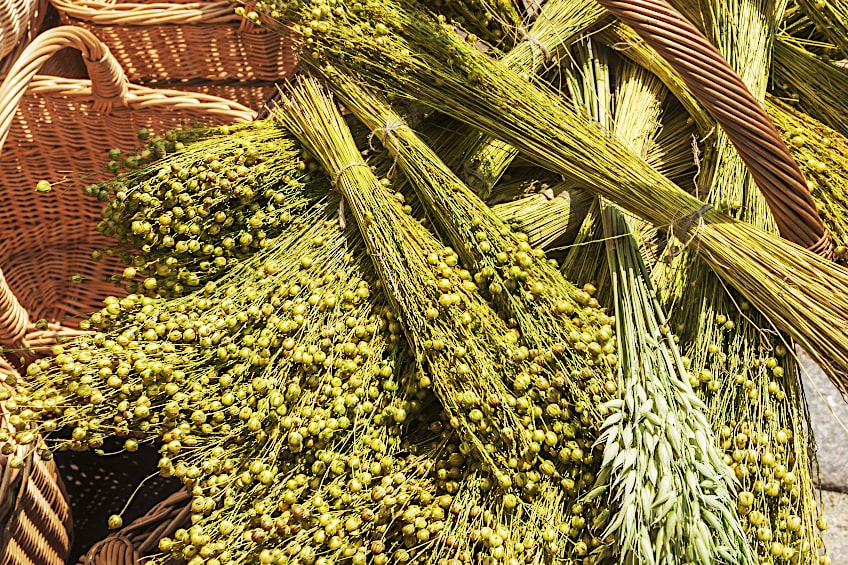
The benefit of using linen canvas is that it is not as fragile as the typical canvas material. This enables you to be less delicate with it as you are creating your masterpiece. You can make use of a variety of techniques that would usually cause your canvas to get all scuffed up, like scratching and etching, scraping, and anything else that you might have avoided in the past when using a normal canvas. This also means that your artwork will last longer because linen canvas is more durable.
Canvas Textile and Weave
Not only is it vital that you take into account what fabric your canvas is made of, but you should also take into account how the canvas fabric is woven. We have spoken in other tutorials about the right paper to use for your painting, and how each type of paper is measured. Well, the canvas is measured for each square yard. This means that if your canvas is lightweight, the weave is not as tight as a heavyweight canvas.
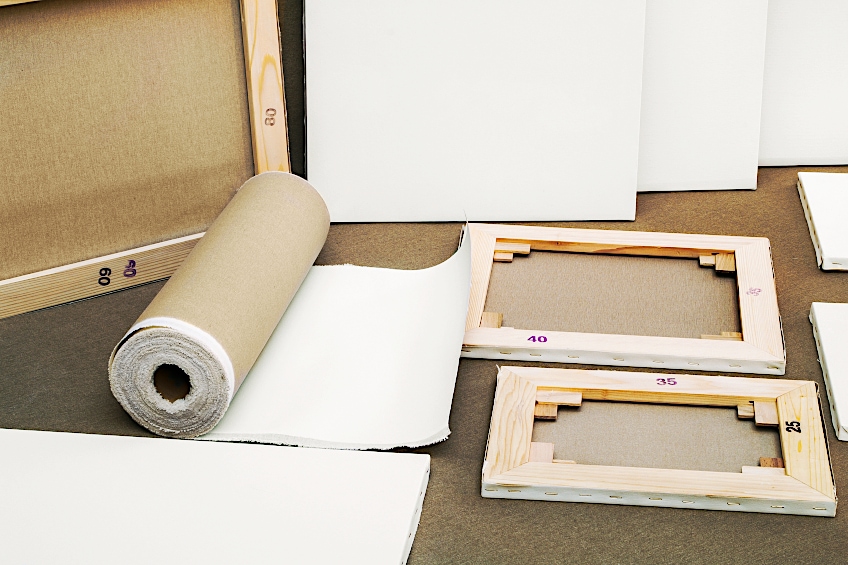
A fine weave creates a smooth surface, and a rough texture is made with a weave that stands out. If you prefer drawing or painting without much pressure, then you might do well with a linen canvas, openly weaved with thin yarn. One other technique that is unusually common when working with such delicate canvases is impasto.
Work out what your subject matter is before you purchase your canvas. This is very important, because if the majority of your artwork is bare skin, you would need to get a smoother canvas with a finer weave. After all, the rough texture will make the skin’s texture look fuzzy.
The Weight of Your Canvas
It is recommended to you to use stronger canvas material if you are using a heavy size of the canvas so that it will be able to withstand more pressure and not be at such a risk of ripping or tearing. Therefore, if you intend on using large canvas sizes, then you should use a more suited material. Considering the weave of the canvas, as well as the thread count and the thickness, the weight of the canvas makes up how much fabric there is in total. If you use a thick thread, the canvas will be heavy, whereas if you use a thin thread, the canvas will be lighter.
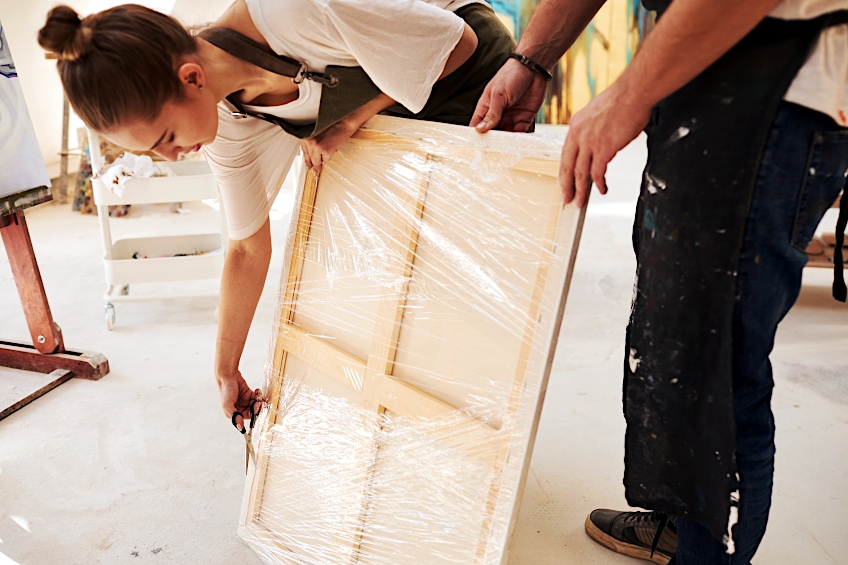
The general weight that can be expected from canvases that are light in weight, is typically five ounces for every square yard. You will find eight ounces for each square yard being canvases of a medium heaviness. Then finally, a heavier canvas can weigh up to ten ounces for each square yard. What is interesting, and often forgotten about, is the fact that a primer will add on some extra weight, so if you purchase a canvas that was primed already, you might not be able to determine the actual weight of the canvas.
Stretched or Panelled Canvas
Whether you prefer your artwork to be placed on a panel or stretched across a frame that is called stretcher bars, just understand that neither one is better than the other, but there are one or two differences that set them apart from one another. If you prefer the canvas to be more flexible, you should go for a stretched canvas. But, bear in mind that this will be risky because acrylic paints can crack when they are bent as they should not bend. The panel version is better for preventing this from happening, because the frame provides structure, therefore, rigidity.
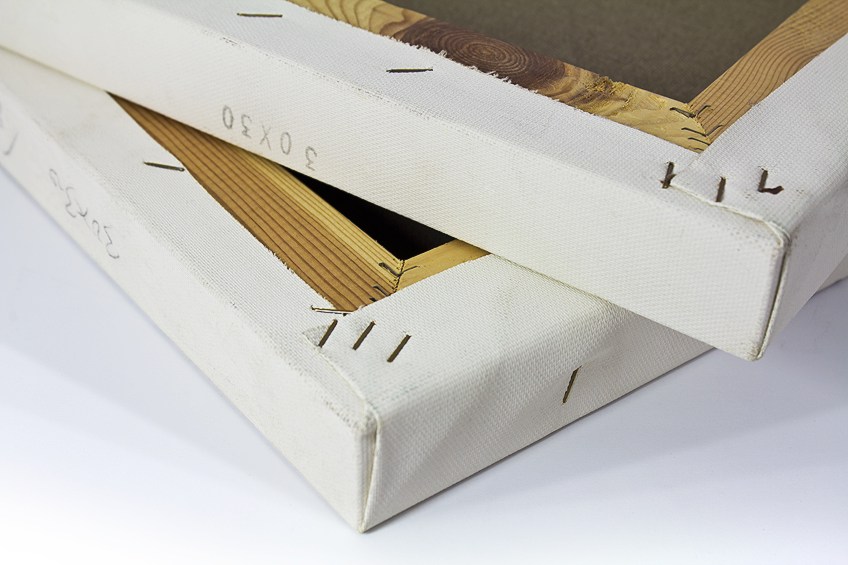
Thankfully, most of the art supply shops and craft stores supply stretched canvases and canvas panels, which is a better option if you are just starting. There are a lot of artists who still prefer to stretch their canvas personally, which can be a lengthy process that most people leave up to factories to do for them. But keeping it old-school and stretching your canvas is rewarding, to say the least.
Stretched Canvas
Have you ever wondered what the frame is called that holds the stretched canvas in place? Well, if you did not know already, those frames are known as “stretcher bars”. Artists who are lovers of acrylic paint will use this type of canvas regularly, because it is held together with a frame, preventing any loose canvas from moving around due to flexibility without the frame, and this can crack your dried acrylic painting.
A canvas that goes well with stretcher panels is a cotton fiber canvas, and they are often already prepped with a layer of primer or gesso. The first thing to keep in mind is the type of primer that was used. Check the instructions on the label of your canvas, provided by the manufacturer, and see what type of paint the primer is suitable for. Oil paint will suit specific types of primers, whereas acrylics or watercolor paint will require other types.

Canvas Panels
A canvas panel is a great option, especially when just starting, and it is a lot more affordable than canvas stretched over panels, and they are very high quality as well. This type of canvas is normally much thinner than stretched canvas, which also makes it an ideal choice for beginners and artists who like to work outdoors or on the move, because it is mounted on a lightweight board, allowing for easy transportation.
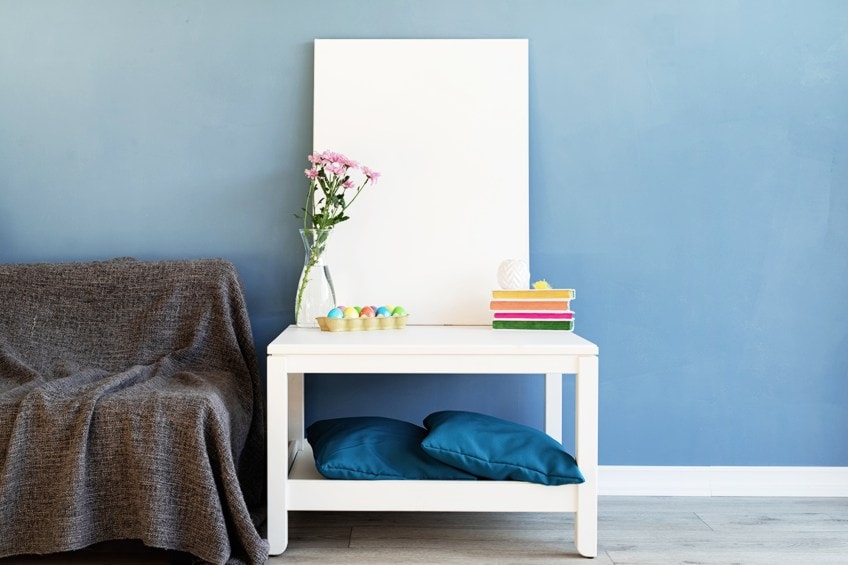
The panel of the canvas is wooden, and the type of wood that is typically used in manufacturing is plywood. Other wood types include gatorboard which is a plastic and wood combined material and heavy board. The only real risk you have when working with this type of canvas is the damages it can sustain from being knocked over.
| Characteristics | Stretched Canvas | Canvas Panels |
| Firmness | May sag as temperature changes | Keeps to its rigid form |
| Mounting | Not Easy | Simple |
| Transport | Not Easy | Simple |
| Strength/Hardiness | Can be easily damaged | Strong |
| Cropping | Not Easy | Simple |
| Storage | Requires space | Easily stored away |
Framing
This is an important question to ask yourself, are you going to frame your final artwork, or not? There is an art to framing a piece of art, and should not be taken lightly. Ideally, the frame needs to be of perfect proportions to the artwork and to make sure that it surrounds the outside of the artwork beautifully, and does not squish everything in. As you see the frame just as much as you see the artwork inside of it, you must make sure that you choose a frame that suits the artwork you created.

The challenge is to choose a frame that does not steal the thunder from your painting. The next challenge, particularly with oil painting, is waiting for it to fully cure, especially if you plan on you setting it behind glass. The glass of the frame may cause condensation if the paint has not yet dried. This is annoying, because oil paintings can take anything from days, weeks, to even years to cure properly.

How to Display Your Canvas
If you thought that choosing the perfect frame for your artwork was difficult, then be warned that deciding how and where to display your artwork is no less challenging. Interior design is a big factor for so many people, and the placement of a piece of art can seriously influence the design. If you hang one small canvas, even if it is in a frame, on a large wall in a room with a high ceiling, the painting will look like a mosquito on an elephant. The predominating colors in your artwork and the color of the frame is also important to factor in, because it should ideally suit the palette used in your home.
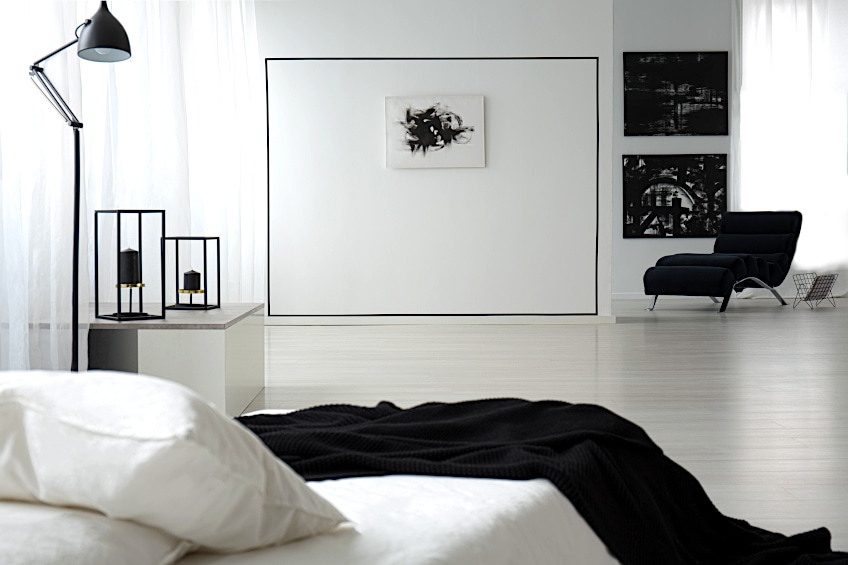
Budget
This is a factor that not many can avoid, and no matter how boring, it is very important to most artists. If you are unpracticed, you might go through canvases quicker because of all the experimentation required to master your painting skills. When choosing a canvas, keep the following in mind:
- The fabric quality
- Whether your canvas should be linen or cotton
- Whether you should paint on a panel canvas, or a stretched one
- Where the canvas you choose was made and who made it
So, what are standard canvas sizes? As we have mentioned, there are a few commonly used canvases that are commonly found in art supply shops, but the typical canvas size will just depend on your definition of what a typical canvas size is because your art skills are your own. The typical canvas size that works for one artist might not work for another, and subject matter calls for a variety of shapes and sizes. It is a good thing that we are not limited in our choice of canvases because our imaginations can run wild with the options that the modern-day has given us. Now that you are fully equipped with the knowledge of what the typical sizes are for canvases, and all their various forms, you can become even more of a professional by knowing how to choose the right canvas for your artwork.
Frequently Asked Questions
What Is the Best Way to Measure a Canvas?
Depending on the measurement system you are using, this will differ. We work in inches, so to measure it, you will need a measuring tape and have your canvas mounted against a wall for accuracy.
Which Is the Best General Canvas Size?
In our opinion, the size of 30 x 36 inches appears to be the most popular and most commonly used. This sized canvas can be used either as a single work or as a complement to another painting on your gallery wall.
What Is the Biggest Canvas Size?
A lovely artwork looks so beautiful on a massive canvas, especially if you have the right space for it! We would like to remind you that the large canvas sizes are only possible if they are stretched, and their maximum size is 72 x 36 inches.
What Is the Smallest Canvas Size?
Canvases come in so many sizes, you may be wondering what the smallest sized canvas is available, and the chance is likely that you could find the teeniest, tiniest sized canvas if you looked hard enough. However, if you are looking to use a smaller canvas size, we recommend you use a 5 x 5-inch canvas.
Larissa Meyer is a 32-year-old mother from Michigan and creative spirit since childhood. Her passion for painting and drawing has led her to an education as an illustrator and a career as a freelance graphic designer. She has a Bachelor of Fine Arts in Illustration and a degree in Graphic Design. Larissa is a talented artist who is able to master a wide range of styles and techniques to bring her artistic vision to life. Her greatest passion is currently fluid painting and epoxy resin art. Larissa’s love for art and her knowledge and experience in illustration make her the perfect Creative Director for our fluid-painting.com team. She is the creative head of our team and shares her passion and knowledge with our community through articles and tutorials.
As a mother of a 2-year-old daughter, Larissa also understands the importance of fostering creativity in early childhood. She uses her experience and knowledge to help other parents inspire their children and develop their artistic skills as well.
Learn more about Larissa Meyer and about us.




